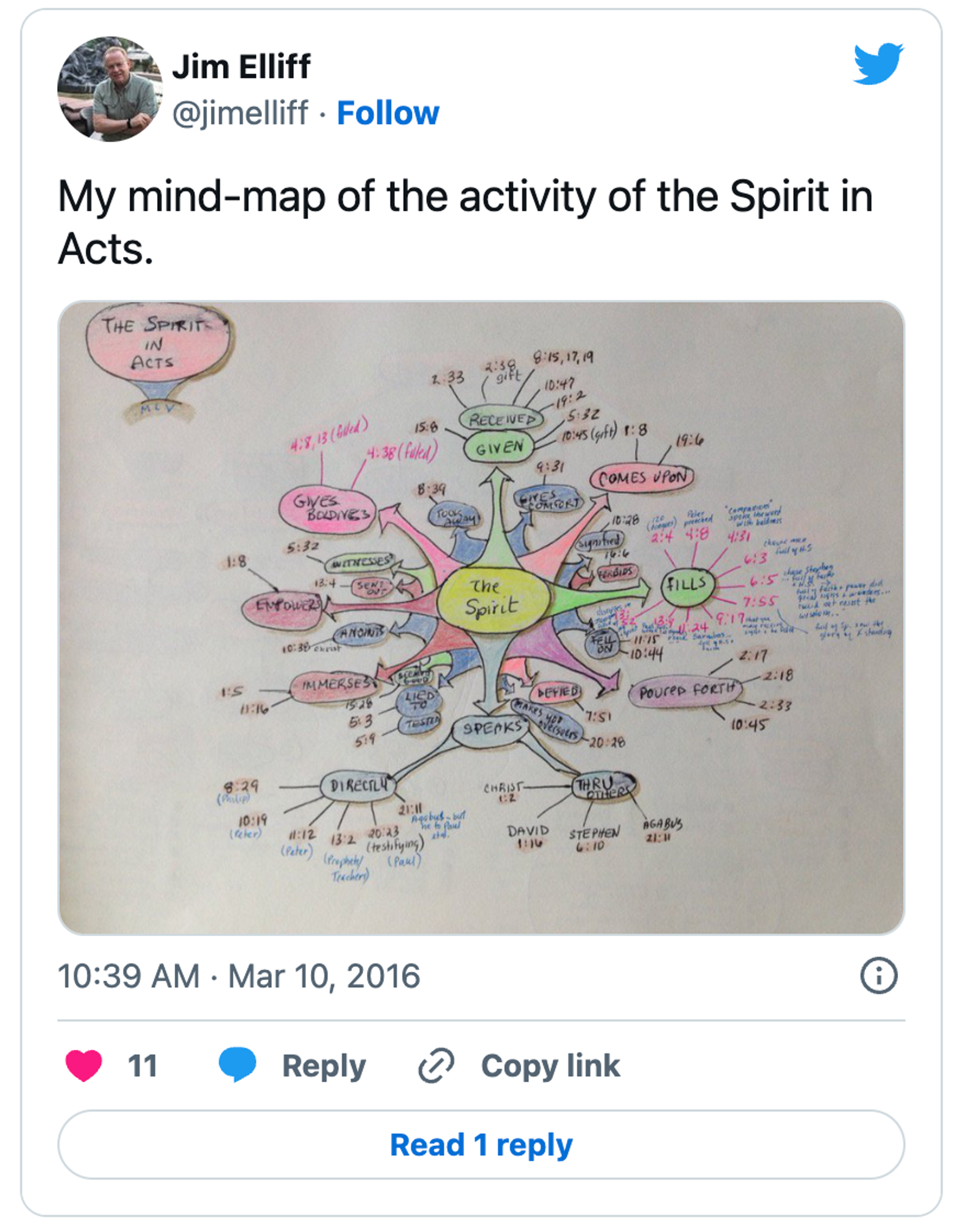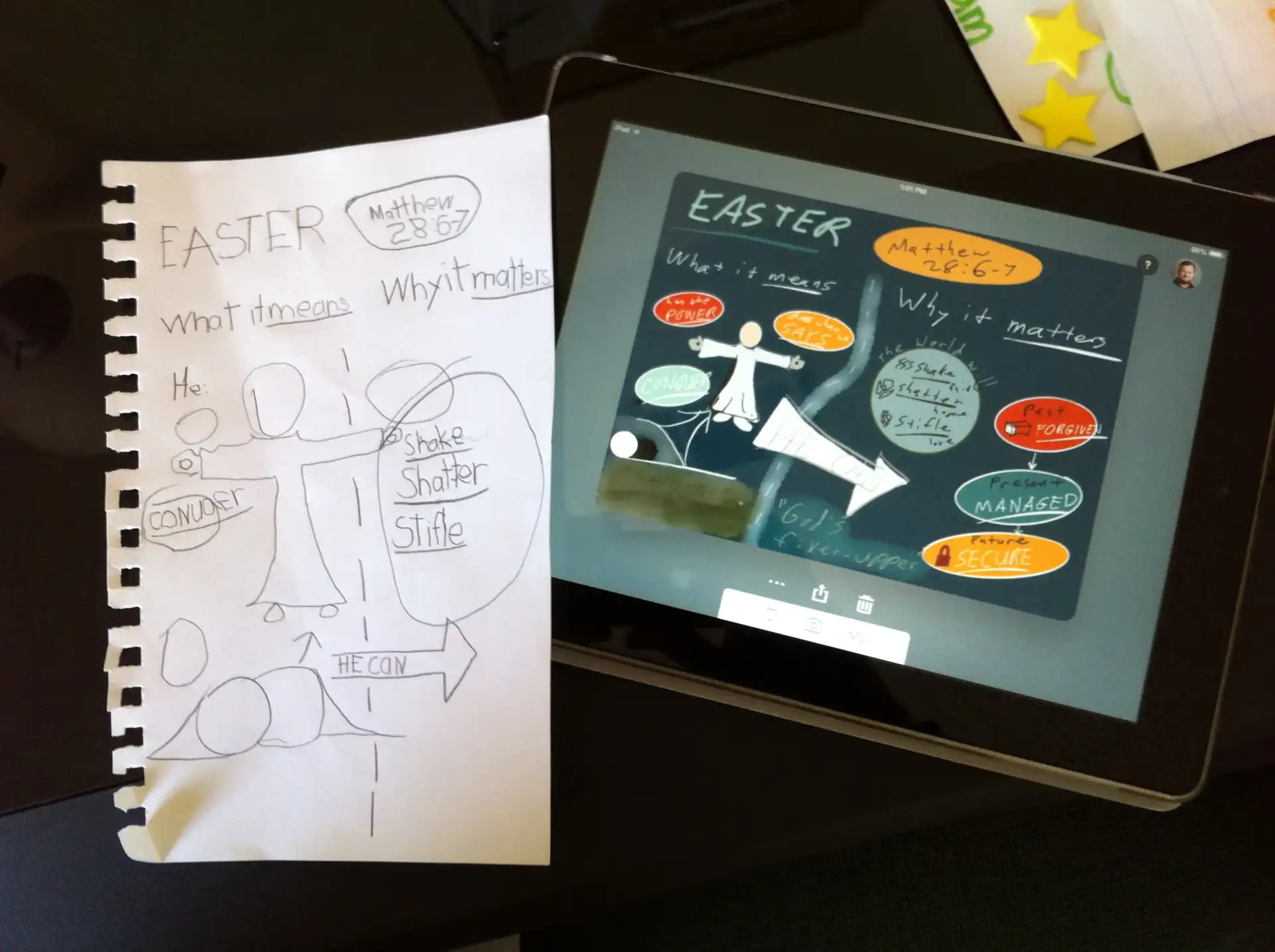Using Visual Thinking to Study and Remember Text
Pictures are easier to process and recall than words. We usually don’t remember every detail, but the main subjects are clear. As a parent, I will remember the recent Easter Sunday when I tried sketching the morning sermon. My five year old son copied me instead of drawing his usual maps and numbers.
This site is about doing Bible study beyond words. That slogan isn’t limited to data visualization. It can include other kinds of visual thinking, like: mind maps, sketches, or text markups to engage deeper thoughts.
Sketchnotes
Sketchnotes are gaining popularity as a way of capturing talks at conferences. Watching Catherine Madden do this at the 2016 Tapestry conference nudged me to try it out. Since I hear a short talk every Sunday morning, that seemed like the best place to start. Here’s a larger version of the one my son and I did on Easter.

Clearly this exercise is not about skill, but the activity of drawing.
Of course, I am by no means the first to connect sketch notes and preaching. C. Wess Daniels, a Quaker minister, describes the moment he found the value of visual thinking:
In a matter of about 10 minutes, I went from not being able to explain succinctly or clearly what my model was or how it worked, to not only being able to explain it but show it with some very basic illustrations.
I experienced something similar during the closing Tapestry talk by Nick Sousanis. He asked us to draw our day using simple lines and shapes. My hand started moving before it felt like I was thinking about what to draw. Five minutes later, the exercise was over. My thoughts were more organized and my sketch seemed to fit.
Mind Maps
Mind maps are a more structured but still free-flowing way to organize thoughts. It starts with a central idea that branches out into more and more connected ideas. Jim Eliff, President and Founder of Christian Communicators Worldwide, recently shared this mind map about the Holy Spirit in Acts:

This connects one central idea to scattered texts. I see an overview of that idea and I understand connections better than I could in an outline format.
Inductive Bible Study
Not every kind of visual thinking involves a drawing. It can be as easy as colored boxes, underlines, and other text annotations. Many inductive Bible study methods involve some standard ways of marking common elements. Going beyond single-color highlighting helps students find repetitions, key words, and literary devices. These observations are the starting point for any inductive study. Your eyes and hands connect to cement facts in your brain. Then, they are close at hand while looking for the passage’s meaning and application.
Lasting Memories
Although our brains are unique, the same creator gave us amazing abilities. Your hands and eyes work together to draw clear, lasting connections. Give it a try.
Sketching captured my young boy’s attention while focusing my thoughts. That is something I will remember.
